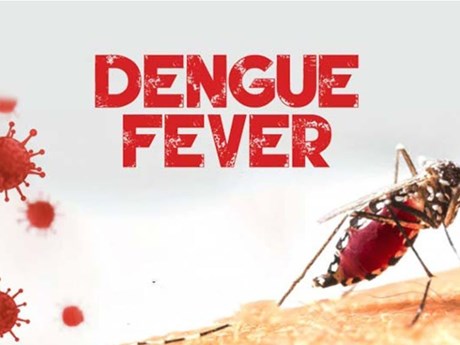Dengue fever cases rising as climate change draws tiger mosquitoes to Europe

As climate change pushes temperatures up, invasive mosquitoes are embedding into European countries – bringing dengue fever with them.
In 2023, there were 130 locally acquired cases of dengue reported in the EU, compared to 71 in 2022, according to an update from the European Centre for Disease Prevention and Control (ECDC).
The rise is even more stark when you look back further – between 2010 and 2021, there were 73 cases across the whole period.
“Climate change is creating more favourable conditions for invasive mosquitoes to spread into previously unaffected areas and infect more people with diseases such as dengue,” ECDC director Andrea Ammon said.
“Increased international travel from dengue-endemic countries will also increase the risk of imported cases, and inevitably also the risk of local outbreaks.”
Imported cases are on the rise, too. More than 4,900 people in Europe caught dengue while travelling abroad in 2023 – the highest figure since surveillance began in 2008 and up from 1,572 cases in 2022.
The tiger mosquito, which spreads dengue as well as chikungunya and Zika virus, used to be found only in tropical countries.
But the ECDC has found it is now established in 13 European countries: Austria, Bulgaria, Croatia, France, Germany, Greece, Hungary, Italy, Malta, Portugal, Romania, Slovenia and Spain.
The tiger mosquito has also been detected by authorities at UK ports several times in recent years, but so far no local populations have been established.
Dengue symptoms include joint pain that can be so bad people feel their bones have been broken. Which is why it’s also known as ‘break bone fever’.
While 75% of infected people have no symptoms, 1% to 5% develop potentially fatal severe dengue.
For those who do develop symptoms, others include severe headaches, pain behind the eyes, nausea, vomiting and swollen glands, according to the World Health Organisation (WHO).
Sufferers can also experience a high temperature and a rash.
Typically, symptoms show between four and 10 days after infection. They tend to last for two to seven days.
Mosquito-borne diseases are only likely to become more common in Europe as climate change creates favourable environmental conditions for the growth of mosquito populations, the ECDC warned.
It advised people living in areas with mosquitoes to remove stagnant water from gardens or balconies where mosquitoes can breed, use bed nets or window screens and insect repellent.
It is not just dengue fever that is cause for concern as mosquitoes spread further into Europe.
In March this year, a person in the Spanish city of Seville was infected with West Nile virus.
“Although an isolated case, it highlights that the transmission of West Nile virus can occur very early in the year, likely due to suitable climatic conditions,” the ECDC said.
A type of mosquito that carries yellow fever – as well as dengue, chikungunya, and Zika – also recently established itself in Cyprus.
The ECDC said the potential for it to make its home in other parts of Europe was “concerning due to its significant ability to transmit pathogens and its preference for biting humans”.
